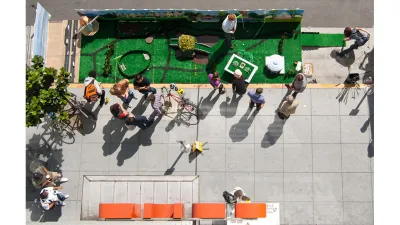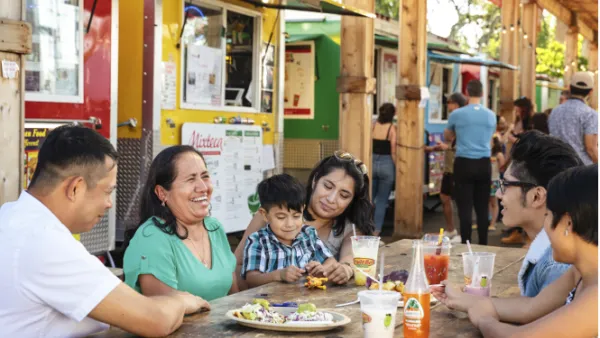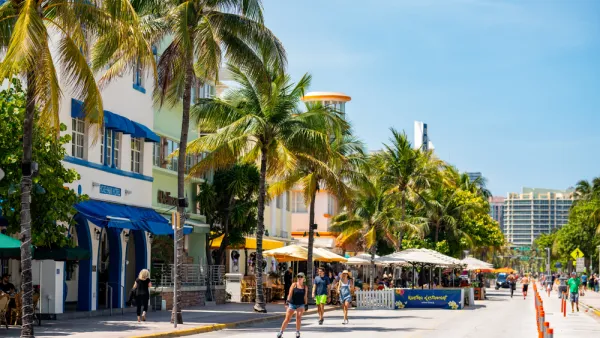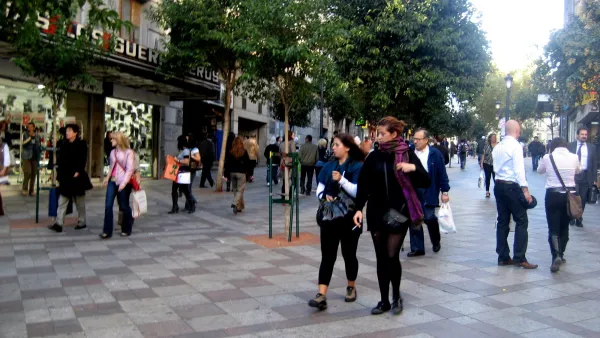COVID-19 restrictions have highlighted the importance of abundant, multi-use open spaces accessible to all.

Of the many profound changes experienced by cities in 2020, writes John King, the most meaningful might be the "realization of the importance of public space in all its forms, as well as heightened expectations of what such spaces should provide." From public seating to pocket parks to vast open spaces, the restrictions on indoor(and many outdoor) activities highlighted the need for safe, accessible, and abundant public spaces.
"In a July survey conducted by the East Bay Regional Parks District, more than 20% of the respondents said they visit one of the district’s 73 parks 'weekly,' four times the amount recorded in 2019." Public spaces also took on unexpected uses, including parking lots transformed into dining spaces, vacant lots turned into COVID-19 testing sites, and parks used to distribute free food and necessities. Phil Ginsburg, general manager of San Francisco’s Recreation and Park Department, told the San Francisco Chronicle, "parks are not luxuries or sweet amenities — they’re essential infrastructure."
But some warn against "knee-jerk" reactions from city planners and officials who assume, for example, that restrictions on cars are "an absolute good." Oakland's Slow Streets program received such criticism for its expedited implementation and lack of adequate public outreach. Oakland architect June Grant argues that plans must be made at the neighborhood level, where local users know how they use their local roads and public spaces. Ryan Russo, director of Oakland’s Department of Transportation, admits that the city's policies have often failed to reflect the experiences of underrepresented communities. "It’s too easy to listen to voices that reflect your own experiences. We need to stay in conversation with the community."
FULL STORY: As we kept space from one another, our public spaces revealed their new uses

Analysis: Cybertruck Fatality Rate Far Exceeds That of Ford Pinto
The Tesla Cybertruck was recalled seven times last year.

National Parks Layoffs Will Cause Communities to Lose Billions
Thousands of essential park workers were laid off this week, just before the busy spring break season.

Retro-silient?: America’s First “Eco-burb,” The Woodlands Turns 50
A master-planned community north of Houston offers lessons on green infrastructure and resilient design, but falls short of its founder’s lofty affordability and walkability goals.

Test News Post 1
This is a summary

Analysis: Cybertruck Fatality Rate Far Exceeds That of Ford Pinto
The Tesla Cybertruck was recalled seven times last year.

Test News Headline 46
Test for the image on the front page.
Urban Design for Planners 1: Software Tools
This six-course series explores essential urban design concepts using open source software and equips planners with the tools they need to participate fully in the urban design process.
Planning for Universal Design
Learn the tools for implementing Universal Design in planning regulations.
EMC Planning Group, Inc.
Planetizen
Planetizen
Mpact (formerly Rail~Volution)
Great Falls Development Authority, Inc.
HUDs Office of Policy Development and Research
NYU Wagner Graduate School of Public Service




























